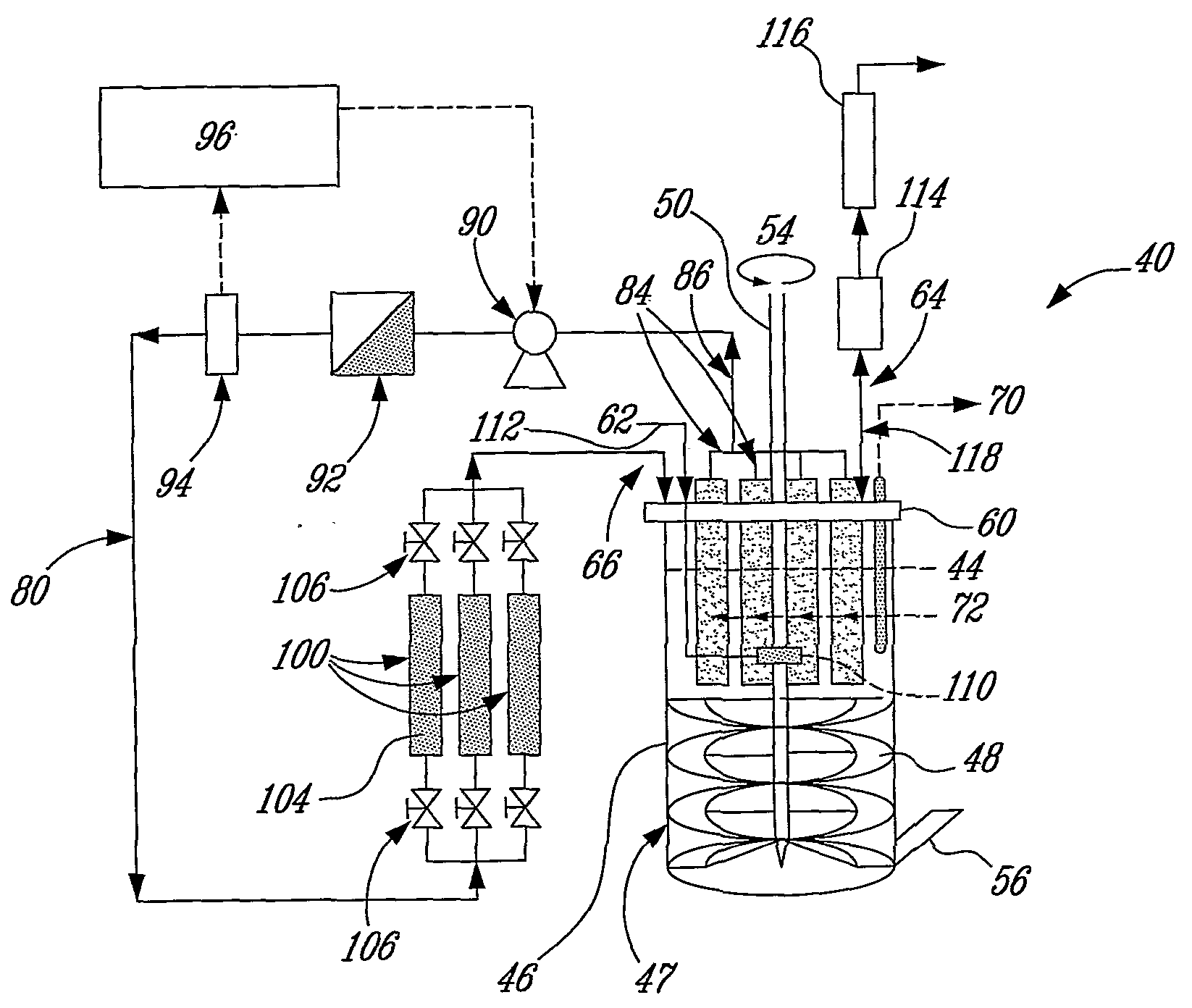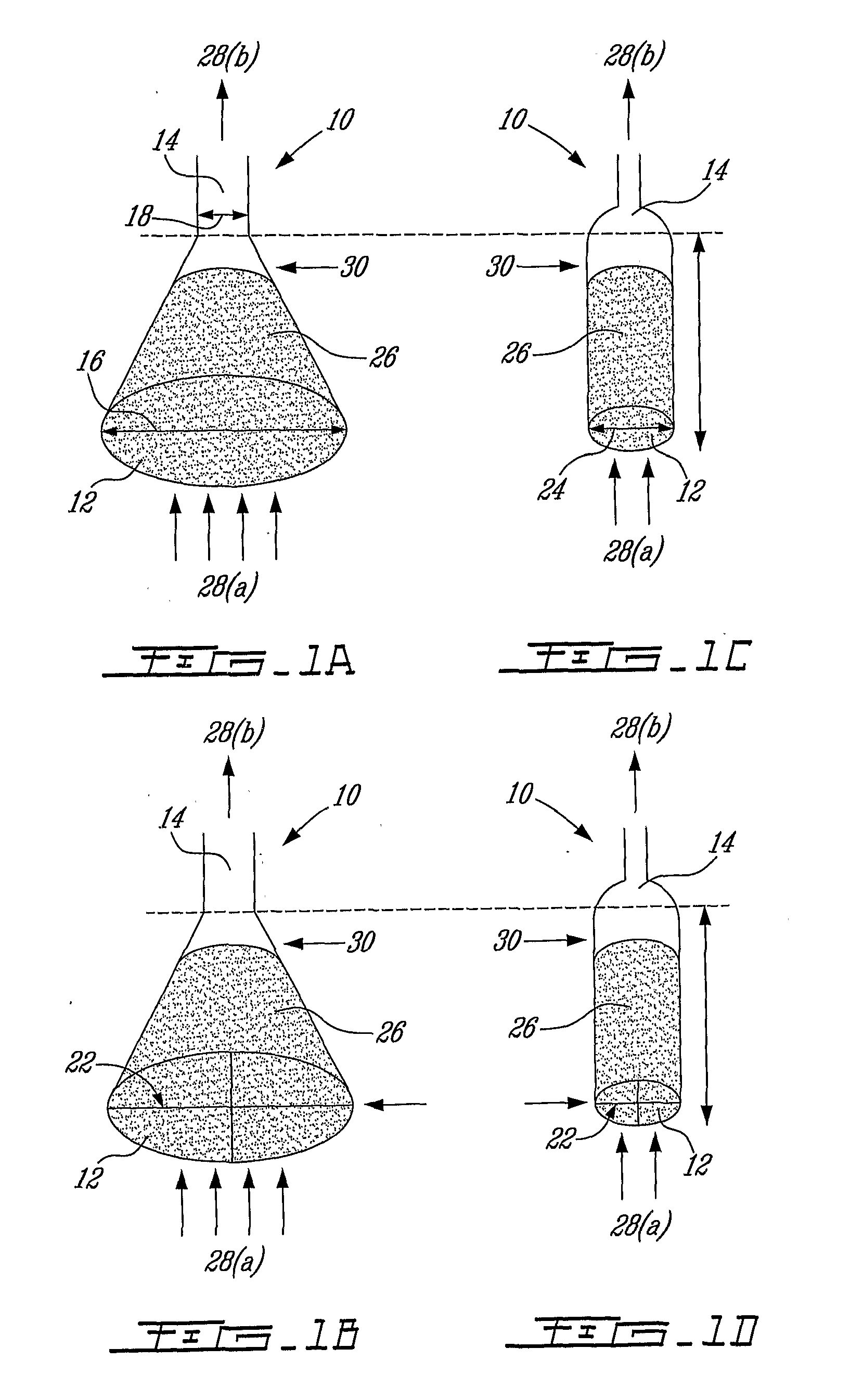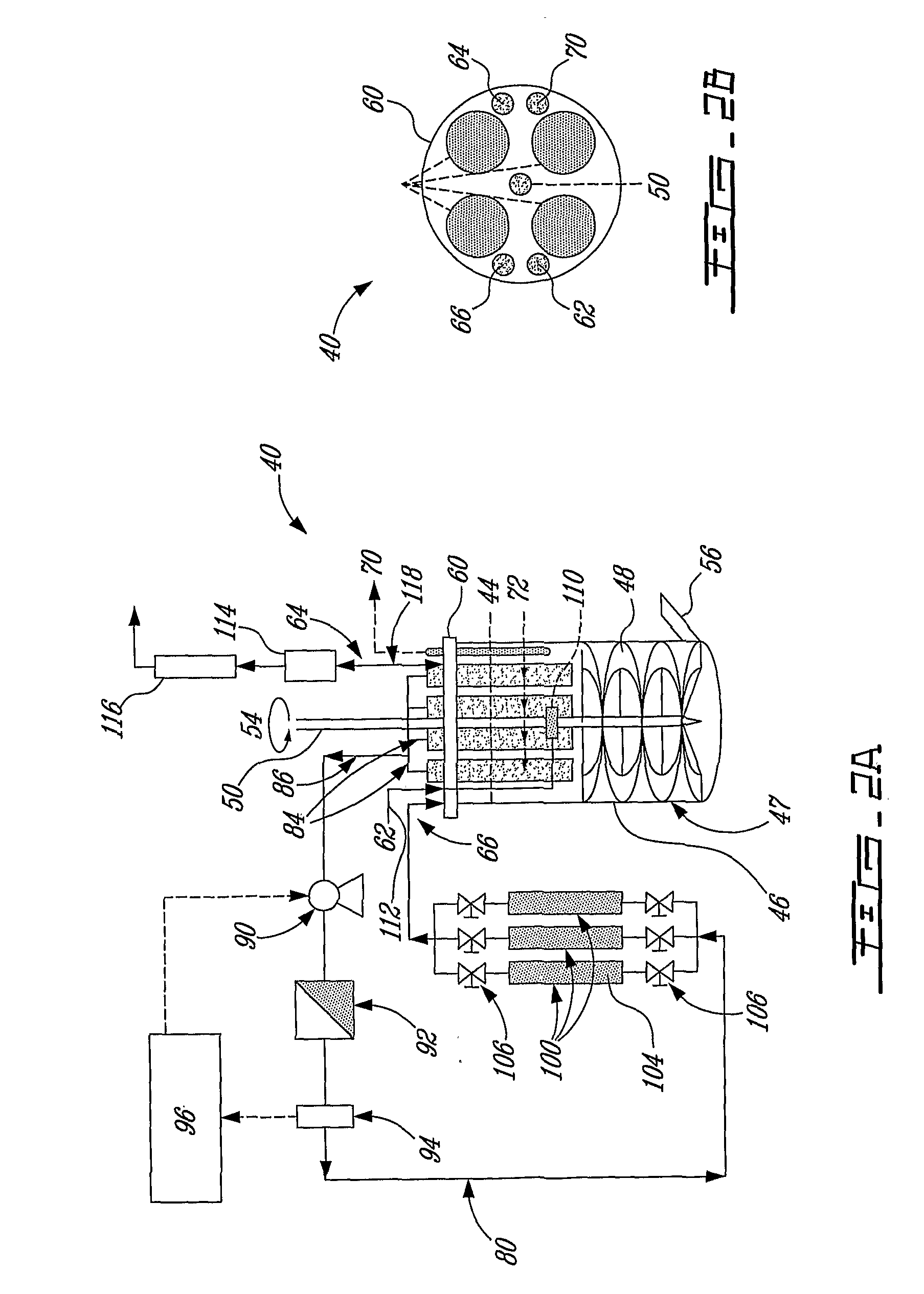High-rate perfusion bioreactor
- Summary
- Abstract
- Description
- Claims
- Application Information
AI Technical Summary
Benefits of technology
Problems solved by technology
Method used
Image
Examples
example 1
E. californica Cell Cultures without Medium Recirculation
[0129]E. californica cells were cultured in the perfusion bioreactor with fresh medium feed, but without any medium recirculation. As shown in FIG. 9, it was confirmed that an exponential feed of fresh culture medium led to a maximum cell growth and a cell density which were sustained for 4 days (Δ), as compared to the batch culture with 100% medium recirculation (◯). The use of a feed, calculated from a model (★), led to a stable cell density (days 5-9), and then the use of an exponential feed allowed a maximal growth rate to be reached and a cell density which was close to the maximum theoretical value (340 gFW / L vs 365 gFW / L). The bioreactor shown was perfused for 20 days without any operational problems.
example 2
Tobacco Suspension Cell Culture
[0130]Tobacco suspension cells exhibit a faster sedimentation rate for the complete range in SCVs (FIG. 10). This confirms that the bioreactor can be perfused at a higher rate for tobacco cells that for E. californica cells, the possible medium perfusion rate being close to the cells sedimentation rate. For example, the medium perfusion rate at a SCV of 60% will be close to 1 mm / min for E. californica and close to 6.5 for N. tabacum.
Results
Cell Sedimentation Velocity is Related to Cell Suspension SCV
[0131]The cell / medium separation approach was based on sedimentation. Because it had been previously observed that the porosity of a cell bed evolves with culture age and may differ from subculturing (Gmati et al., 2004), the SCV was used rather than suspension DW or WW content to characterize the cell suspension. Determined in the linear region of the cell bed, height rate decreased with time (SD=0.7%, R2=99.6%) (FIG. 3), and the cell sedimentation veloci...
example 3
Production and In-Situ Extraction of a Recombinant Protein Using a Plant Cell System
[0152]The bioreactor was used efficiently to demonstrate its ability for protein production using plant cell lines. Alfalfa cells genetically modified to produce recombinant aprotinin were cultured for 20 days. Medium was aseptically recirculated through a single sedimentation column at a perfusion rate of 2 d−1 from day 5. Despite the use of a cell line for which the genetic modifications as well as the cell line selection were not optimized cell suspension culture neither for protein secretion; accumulation of aprotinin was observed in the extracellular medium before medium recirculation. Recirculated medium was fed through a fluidized bed of affinity resins for protein extraction before to be returned back to the bioreactor vessel. The extraction phase was composed of a Sepharose™ matrix coupled to trypsin, a natural ligand for aprotinin. Thus from day 5 and medium perfusion, aprotinin accumulated...
PUM
 Login to View More
Login to View More Abstract
Description
Claims
Application Information
 Login to View More
Login to View More - R&D
- Intellectual Property
- Life Sciences
- Materials
- Tech Scout
- Unparalleled Data Quality
- Higher Quality Content
- 60% Fewer Hallucinations
Browse by: Latest US Patents, China's latest patents, Technical Efficacy Thesaurus, Application Domain, Technology Topic, Popular Technical Reports.
© 2025 PatSnap. All rights reserved.Legal|Privacy policy|Modern Slavery Act Transparency Statement|Sitemap|About US| Contact US: help@patsnap.com



